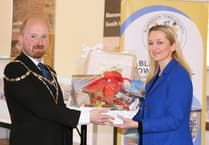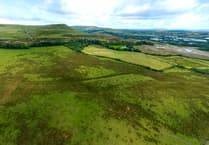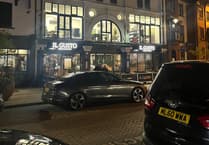A NATIONAL Lottery-backed scheme to restore a conservation area in a town that was once “completely derelict” will only restore five of nine identified buildings.
The National Lottery Heritage Fund has provided £1.1 million for the project to bring buildings in Blaenavon town centre back into use and good condition. The centre of town also forms part of the UNESCO World Heritage Site that was awarded to Blaenavon, in 2000, in recognition of its role at the formation of the industrial revolution.
Nine buildings had been identified as a “high priority” when the Townscape Heritage Programme was approved in 2018 but delays, including the Covid pandemic, have slowed progress and it is now intended building work and linked community projects will be completed by the end of 2025, rather than 2021 as originally planned.
Members of Torfaen Borough Council’s prosperous communities and overview scrutiny committee were told that the Lottery is “satisfied” and has approved the reduction in target properties.
Blaenavon independent councillor Nick Horler said spending on the five buildings had come within £25,000 of the total £1.5 million capital budget and asked “does this indicate insufficient capital if all nine properties had come forward?”
The council’s team leader for the project Rebecca Hartley, replied: “When we developed the original case back in 2017 it was a very different world compared to today and the budget then was able to support nine buildings but they were not detailed costs.”
She said costs on the five buildings – Bethlehem Chapel, number one Market Street (currently HM Stores), and 69 and 70 Broad Street (currently the HWB youth service), which have all been completed, and the Market Tavern and 24 Broad Street, where work is still being carried out – have come in higher than originally anticipated.
But she confirmed: “Had nine come forward we wouldn’t have been able to support all nine, but the way it has panned out we have been able to support them all.”
Head of communities and renewal Bethan McPherson said the five included the “most prominent buildings”.
That has seen the Grade II-listed chapel, that was vacant, restored for religious and community use at a total cost of £316,511, while internal and external work to bring the prominent Market Tavern back into use as two retail units on the ground floor, and four residential flats above, at a cost of £493,045 is anticipated to be completed by April 2024.
As well as improvements and restorations to HM Stores and the HWB, that were already in use, it is intended 24 Broad Street will be brought into use for a food and drink business.
Labour member for Llanfrechfa and Ponthir Karl Gauden said, with up to 70 per cent funding available from the Lottery for restoration costs, there was a potential properties could be a “nice little earner” after Blaenavon’s Labour councillor, Liam Cowles, asked how the “socio-economic benefits” of the spending was judged.
Ms Hartley said the National Lottery has a 10 year claw back period, by which it can reclaim grant money if a property is sold or isn’t kept in good condition. No other funder has such a long period.
She also defended the use of public money and said: “Without any public sector money there would be no private investment. We can all remember what Blaenavon looked like 25 to 30 years ago – it was completely derelict.”
Ms McPherson said it is also hoped that owners, as a result of the investment, would want to remain in place rather than sell the properties on.
Councillors Horler and Cowles also said they were concerned local people weren’t always aware of how the money was being spent and said they were “bombarded” with questions over scaffolding at the Market Tavern.
The project has used Instagram to share updates on its work but Cllr Horler said “most people with an interest in the town use Facebook” rather than the more fashionable Instagram.
Project manager Mair Sheen said if a similar project is run in future a “Facebook page might be a good idea” but updates had been shared with Facebook groups and the town council’s Facebook page and work had also taken place with local schools, including developing learning resources, and various community groups, including a film project.





Comments
This article has no comments yet. Be the first to leave a comment.